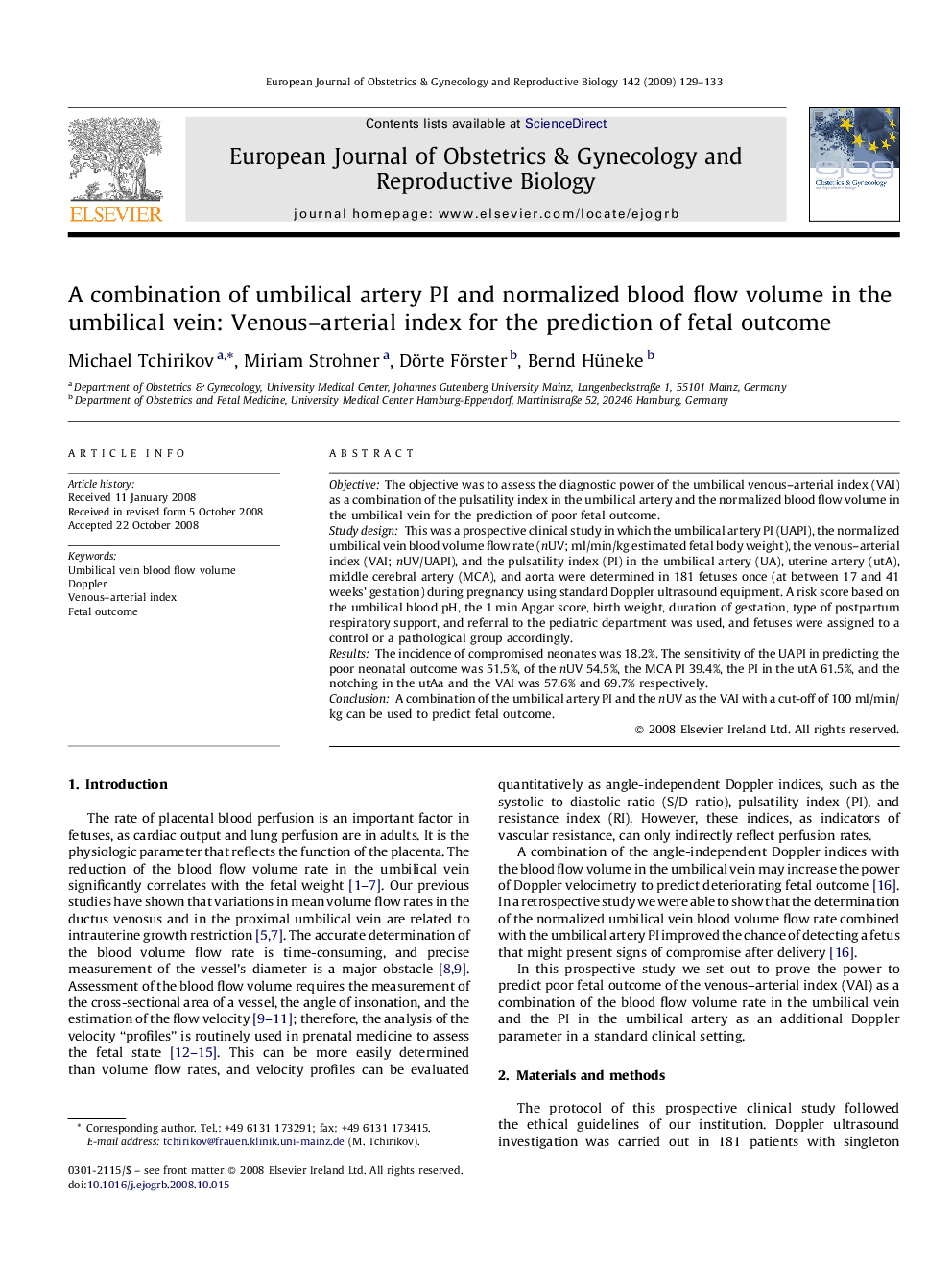| کد مقاله | کد نشریه | سال انتشار | مقاله انگلیسی | نسخه تمام متن |
|---|---|---|---|---|
| 3922100 | 1599869 | 2009 | 5 صفحه PDF | دانلود رایگان |

ObjectiveThe objective was to assess the diagnostic power of the umbilical venous–arterial index (VAI) as a combination of the pulsatility index in the umbilical artery and the normalized blood flow volume in the umbilical vein for the prediction of poor fetal outcome.Study designThis was a prospective clinical study in which the umbilical artery PI (UAPI), the normalized umbilical vein blood volume flow rate (nUV; ml/min/kg estimated fetal body weight), the venous–arterial index (VAI; nUV/UAPI), and the pulsatility index (PI) in the umbilical artery (UA), uterine artery (utA), middle cerebral artery (MCA), and aorta were determined in 181 fetuses once (at between 17 and 41 weeks’ gestation) during pregnancy using standard Doppler ultrasound equipment. A risk score based on the umbilical blood pH, the 1 min Apgar score, birth weight, duration of gestation, type of postpartum respiratory support, and referral to the pediatric department was used, and fetuses were assigned to a control or a pathological group accordingly.ResultsThe incidence of compromised neonates was 18.2%. The sensitivity of the UAPI in predicting the poor neonatal outcome was 51.5%, of the nUV 54.5%, the MCA PI 39.4%, the PI in the utA 61.5%, and the notching in the utAa and the VAI was 57.6% and 69.7% respectively.ConclusionA combination of the umbilical artery PI and the nUV as the VAI with a cut-off of 100 ml/min/kg can be used to predict fetal outcome.
Journal: European Journal of Obstetrics & Gynecology and Reproductive Biology - Volume 142, Issue 2, February 2009, Pages 129–133